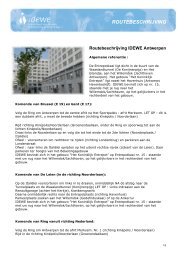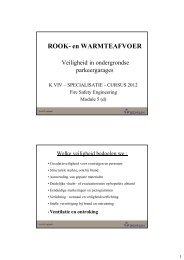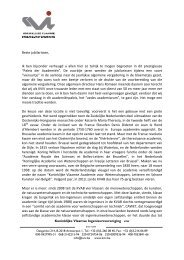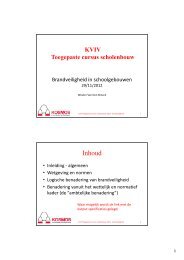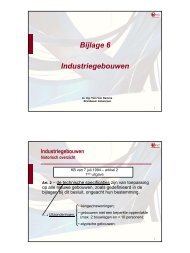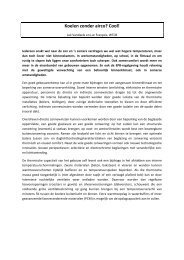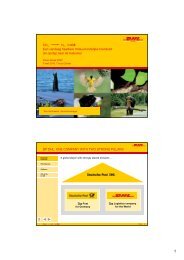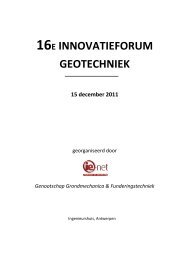Schoonbaert volledig - ie-net
Schoonbaert volledig - ie-net
Schoonbaert volledig - ie-net
Create successful ePaper yourself
Turn your PDF publications into a flip-book with our unique Google optimized e-Paper software.
90 S. M. OLENICK AND D. J. CARPENTER<br />
THE MODELS<br />
Before the model survey was created, the fire engineering community was<br />
polled to identify computer models for fire and smoke. The models<br />
identif<strong>ie</strong>d by the fire engineering community were combined with those<br />
listed in the original survey, as well as others found in assorted fire modeling<br />
literature to develop a complete list of known fire models. These models<br />
were then categorized, and a survey form was sent to developers or known<br />
points of contact to collect more information about each model.<br />
Availability of a model was found to be an important area of interest in<br />
the engineering community. It was decided that all models should be<br />
included in the database even if the model is unavailable, outdated, or not<br />
maintained. The reason for inclusion of these models was that while newer,<br />
more sophisticated and better maintained models may be available, previous<br />
research work may involve older, now outdated and no longer maintained,<br />
and possibly unavailablemodels. Thedatabasewith theinclusion of these<br />
models will provide researchers with a source that describes the characteristics<br />
of these older, no longer maintained, or unavailable models.<br />
A description of the overall model identification and categorization is<br />
provided below:<br />
Zone Models<br />
A zone model is a computer program that predicts the effects of the<br />
development of a fire inside a relatively enclosed volume. In most<br />
applications, the volume is not totally enclosed as doors, windows, and<br />
vents are usually included in the calculation. Zone models for compartments<br />
have been developed for both single-room and multiroom configurations.<br />
The ‘zonal’ approach theory to modeling plume and layer development in<br />
confined spaces was appl<strong>ie</strong>d to fires by several groups in the 1970s, e.g.<br />
Zukoski [3]. The ‘zonal’ approach divides the area of interest into a number<br />
of uniform zones, that when combined, describe the area of interest as a<br />
whole [4]. Within each of these zones, the pertinent conservation laws (i.e.<br />
mass and energy), in the form of mathematical equations describing the<br />
conditions of interest, are solved [4]. The ‘zonal’ approach for an enclosure<br />
fire usually divides an enclosure into two distinct zones: the hot upper<br />
smoke layer and the lower layer of cooler air. The plume acts as an enthalpy<br />
pump between the lower layer and the hot upper smoke layer. In reality,<br />
depending on the room size and heat release rate of the fire, there is no<br />
perfectly defined ‘interface’ between the hot upper smoke layer and lower<br />
layer and the hot upper smoke layer is not an uniform temperature (as<br />
higher temperatures are observed closer to the fire and plume); however, the




